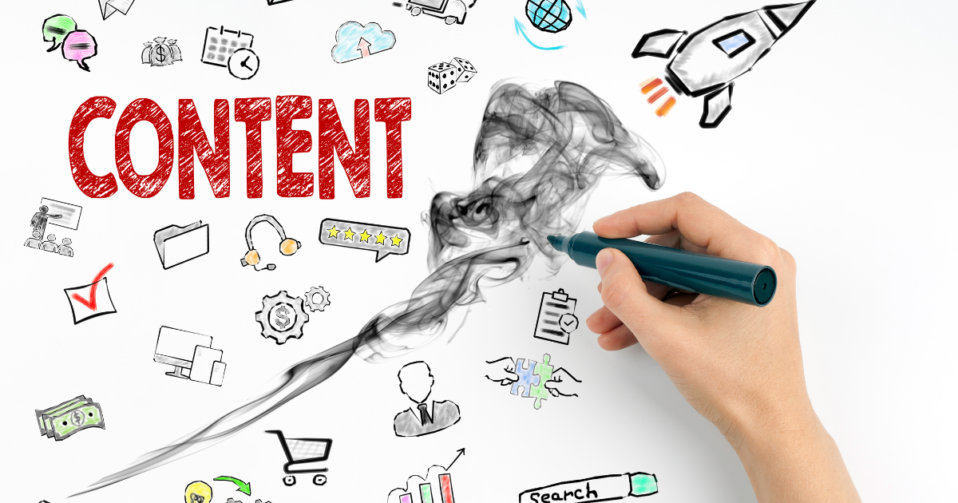History of Social Media
Social Media in the 20th Century
Technology has changed very quickly in the 20th Century. After the first computer prototypes were invented in the 1940s, scientists and engineers began to create ways to develop networks between those computers back then, to begin to produce what we call now the “Internet”.
The earliest forms of the Internet were developed in the 1960s. Original forms of email were also developed during this time. By the 70s, networking technology had improved, and 1979’s UseNet allowed users to communicate through a virtual newsletter.
By the 1980s, home computers were becoming more public and social media was becoming more sophisticated and professional. Internet chats, or IRCs, were first used in 1988 and continued to be popular well into the 1990’s.
The first identifiable social media site which was called Six Degrees, was invented in 1997. It allowed users to upload a profile and make friends with other users. In 1999, the first blogging sites became popular, creating a social media consciousness that is now very popular amongst us in present day.
Social Media Today
In the earl 2000’s, the invention of blogging became a worldwide sensation. Sites like MySpace and LinkedIn gained significance in these early yearts and sites like Photobucket and Flickr orchestrated online photo sharing. In addition to this, YouTube came out in 2005, allowing an entire new wave for users to communicate by sending posting pictures and videos for viewers to witness across the globe.
By 2006, Facebook and Twitter both became available to users throughout the world. These sites remain some of the most popular social networks on the Internet. Other sites like Tumblr, Spotify, Foursquare and Pinterest began popping up to fill specific social networking niches.
Today there is a tremendous number of platforms that allow users to cross-post comments and information which can involve users to communicate over the internet without having a person-to-person confrontation. The speculation of what the social media technology will be like in 100 years from now is completely a mystery, but as long as humans are around, anything and everything is possible.
The History of Social Media: The Timeline
2,800,000 BC: Humans first appear on the earth. Somehow, they manage to learn to express themselves and communicate with each other despite a complete lack of memes and emojis.
550 BC: The world’s first postal service is created in Assyria. The phrase “the cheque’s in the mail” is coined.
1792: The telegraph is invented. The first telegraph message ever sent? “New telegraph, who’s this?”
1839: The world’s first “selfie” is taken by amateur chemist and photography enthusiast Robert Cornelius
1890: The telephone is invented. Sadly, it is unable to take photographs or send text messages yet, rendering it almost completely useless
1891: The radio, an early precursor to Spotify, is invented
1940s: The world’s first “supercomputers” are built. The world’s scientists begin developing ways for those supercomputers to communicate with each other. Their dream? To finally be able to publicly share photos of their lunch.
1960s: The earliest forms of the “internet” begin to appear, but are extremely limited in both scale and scope. Also, very little porn (yet)
1969 – August 5th, 1991: (“The good old days”) There is no worldwide web. Human communication and social networking remain analog, and friends continue to pester the world’s citizens with stacks of photos from their vacations.
August 6th, 1991: The worldwide web is unleashed upon an unsuspecting public. Meanwhile, a 4-year-old “Star Wars Kid” is already in training for his internet debut.
1997: The world’s first social networking site: “Six Degrees” is born. Remember them? Neither do we.
January 2000: The millennium bug shuts down everything and ushers in a second dark age. Just kidding. Nothing happened.
2001: Six Degrees shuts down forever. Wait, who?
December 2002: Linkedin is born. The world’s headhunters and hiring agencies lick their chops in anticipation of how easy their jobs are about to become.
March 2002: Friendster is launched. People with very few friends suddenly have lots of friends. The socially awkward of the world rejoice.
July 2002: Friendster reaches 3 million users. The world’s adults shake their heads in dismay
May 2003: Image sharing site Photobucket is launched. Millions of useless digital photos of people’s cats suddenly have a purpose
August 2003 Myspace is founded, and the awesome power of the social network is slowly revealed to the world.
February 2004: Facebook goes live. The world has no idea what’s about to take place.
February 2004: Photo sharing site Flickr is launched. Digital camera sales increase exponentially
April 2004: Facebook Ads are launched to support exponential growth.
June 2005: The world’s angriest website, Reddit, is launched
February 2005: YouTube is born, sounding the death knell of America’s Funniest Home Videos
July 2005: Myspace reaches 22 million users and is growing at a rate of 2 million per month. Everyone can see this THIS bubble will never, ever burst.
October 2006: YouTube is acquired by Google for $1.65 billion, and gets progressively suckier with every passing year.
March 2006: Twitter goes live, paving the way for Donald Trump’s eventual ascension to the Whitehouse
September 2006: The Facebook “Newsfeed” goes live. Facebook’s grip on what the world’s citizens see and hear tightens.
August 2007: The hashtag (#) debuts on Twitter #awesomeidea
October 2008: Spotify goes live. The zombie hand of the music industry bursts through the ground in front of its tombstone
February 2009: Facebook introduces the “like” button. Liking something is instantly transformed from a matter of personal taste to a social necessity. The question “why didn’t you like my…” is uttered for the first time.
May 2009: Facebook surpasses Myspace in user count for the first time. The writing is now on the wall
September 2009: Facebook announces that it is cashflow positive for the first time. Mark Zuckerberg high-fives himself in the mirror repeatedly for 6 straight days.
March 2010: Pinterest goes live. The world’s craft enthusiasts rejoice.
October 2010: Instagram is launched and hits 1 million users by December. The selfie takes its first steps toward become the bane of humankind.
July 2011: Snapchat is launched just in time. Everyone’s parents now have Facebook accounts, which is awful.
April 2012: Facebook acquires Instagram for $1 billion, almost cornering the global market of duck-faced selfies and butt photos
October 2012: Facebook reaches 1 billion active users. The world wakes up to the fact that a for-profit corporation now owns one of its most important communication channels, and that there’s nothing anyone can do about it.
December 2012: Twitter hits 140 million active users. It remains unclear how many of them are actually Russian troll-bots yet.
February 2013: Snapchat users are now sending 60 million snaps per day. Sadly, approximately 58.5 million of them are insufferable.
January 2013: Myspace re-launches with a new website, mobile app, and endorsement from Justin Timberlake. Internet users flood back in droves. Just kidding. Nobody cares.
March 2014: Instagram reaches 200 million active users. People are now going to specific restaurants specifically to take photos of interesting-looking foods.
April 2015: Snapchat reaches 100 million active users, largely made up of millennials. The world’s parents barely take notice and stick to Facebook.
May 2015: Facebook enables GIFs, which is awesome.
June 2015: Friendster shuts down. Wait, who were they again?
September 2015: Snapchat introduces it’s “filters” feature, allowing users to add animal ears and rainbow puke to their snaps. The internet LOVES it.
June 2016: Instagram announces it has reached 500 million active users, many of them creeps.
February 2016: Time Inc buys Myspace (for some reason)
September 2016: Snapchat re-brands itself as “Snap inc” and releases smart sunglasses called “Spectacles”. Nobody cares.
March 2018: It is revealed that Cambridge Analytica harvested troves of user data without their consent and used this data for political purposes. Facebook stock plummets
April 2018: Mark Zuckerberg testifies before Congress. The world sees how weird becoming one of the world’s richest humans can make you.
Source: https://phrasee.co/the-history-of-social-media-a-timeline/





Recent Comments